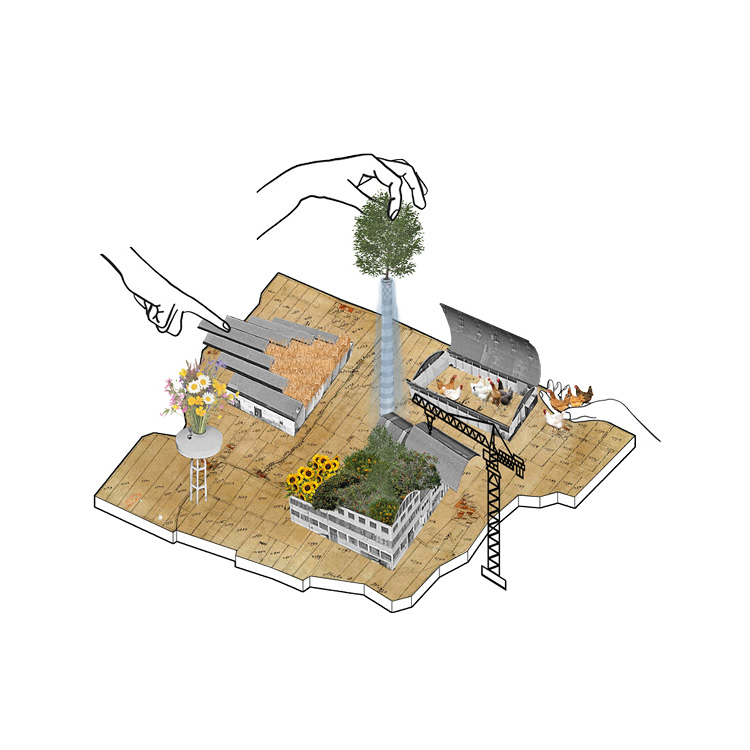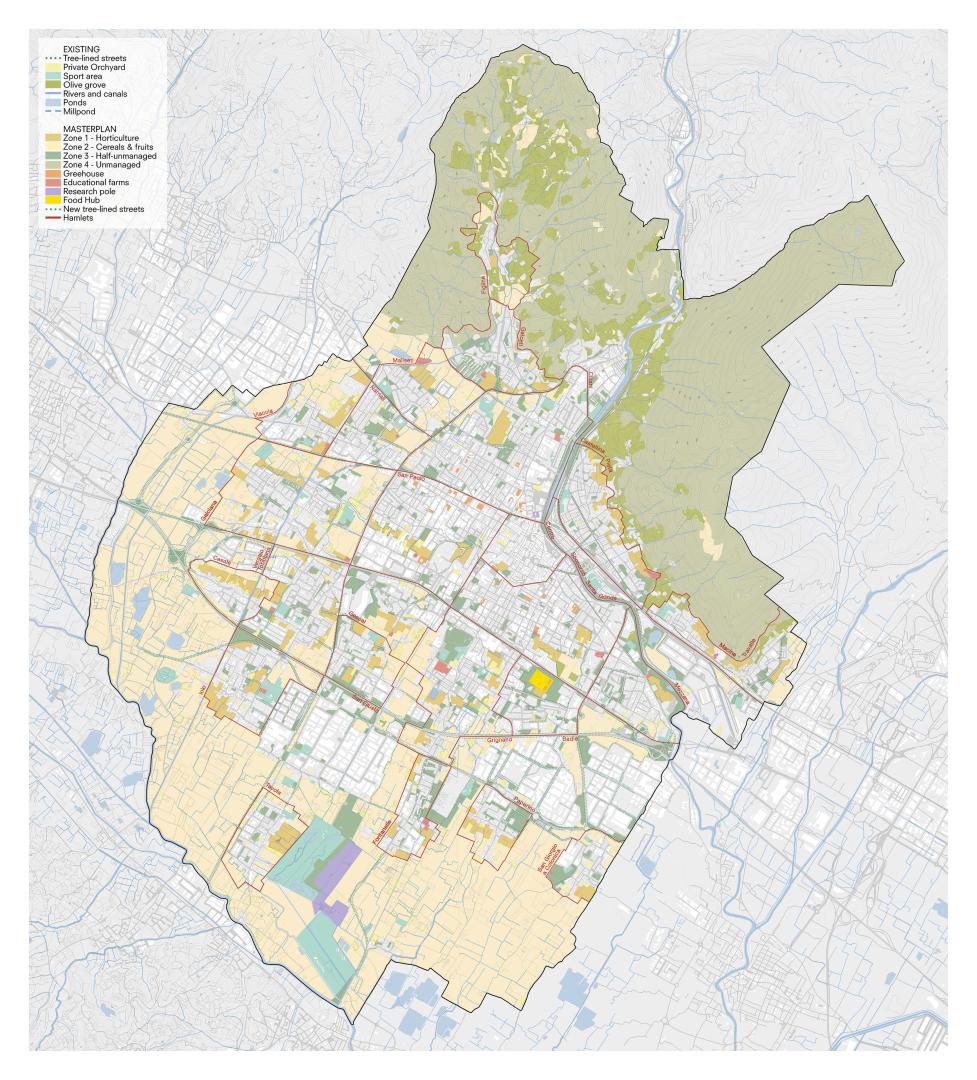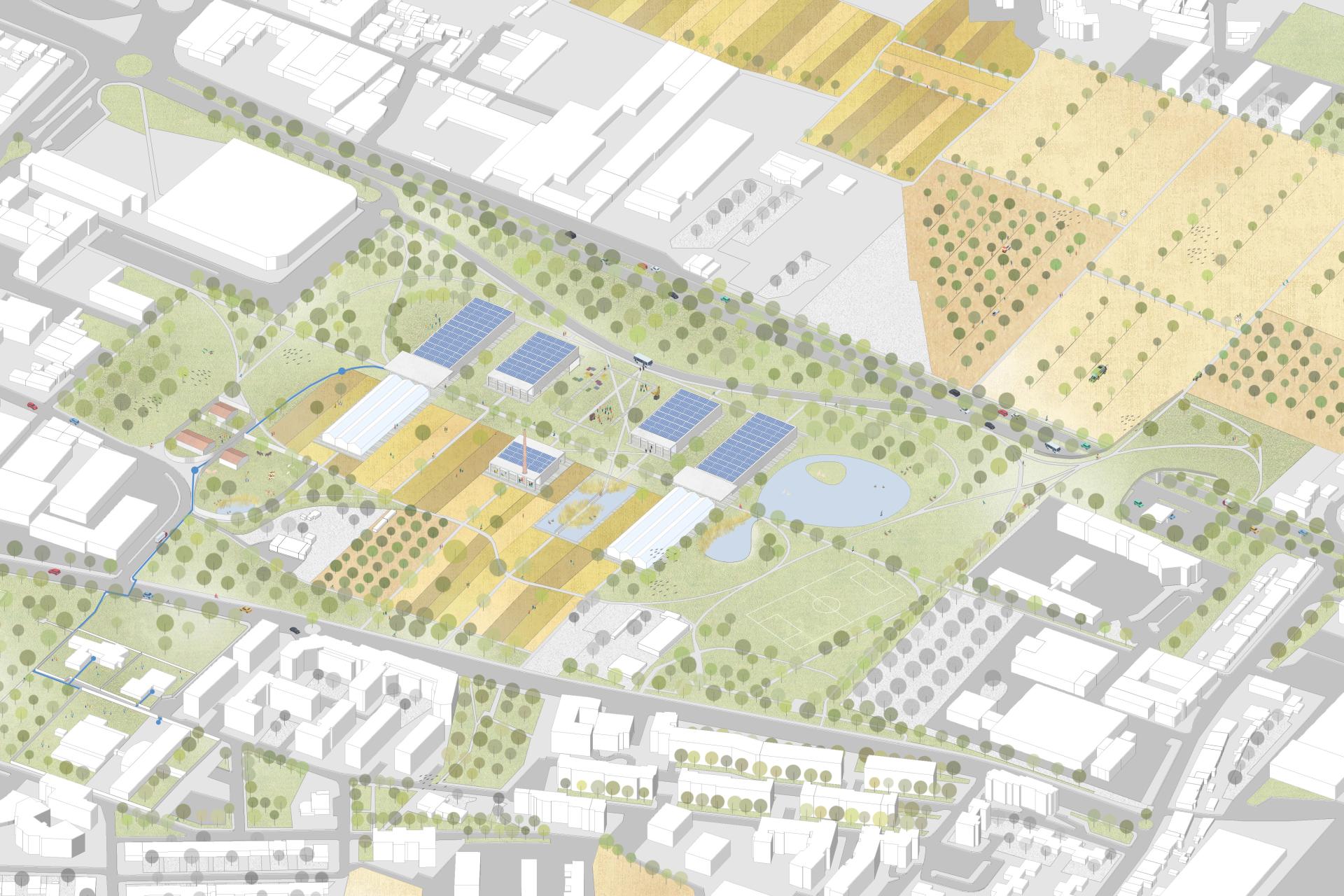Prato Food Factory
Basic information
Project Title
Full project title
Category
Project Description
12.000 years ago agriculture granted food safety to man, so he settled down and developed several activities. Today the food supply is taken for granted, though it is labile and unsustainable in many respects. By changing food policies towards a local production, we can improve its impact on environment and human health. Moreover, by bringing the food production closer to the city, citizens can take advantage of the multifunctionality of agriculture: social cohesion, education, care for nature.
Project Region
EU Programme or fund
Description of the project
Summary
Prato is a medium sized city characterised by a polycentric urban structure. The central core is surrounded by many hamlets that merge with the outer agricultural belt. The result is a city with inner agricultural islands, cultivated with wheat, following an industrial approach in a long supply chain strategy. Nevertheless, these open areas still ensure the inhabitants fundamental ecosystem services, such as pollution and heat islands mitigation. According to agroecology, these can be enhanced by diversifying the cultivations, introducing horticulture crops and using natural treatments. This will also improve biodiversity and provide more local fresh food to the citizens.
In order to do so the whole territory is redesigned, adapting the Permaculture Zones to the urban landscape. The Zone 0 coincides with the residential areas, next to which there is the Zone 1, dedicated to horticulture, while further the Zone 2 is cultivated with cereals and tree crops. The outer Zone 3 is half-managed, which means parks and green areas. Finally, the Zone 4 is the unmanaged one, that includes the northern hills.
By bringing the food production within the city, it is possible to benefit from the multifunctionality of agriculture. Indeed, the agricultural islands inside Prato would be part of the Zone 1, managed by farms through a cofarming program. By doing so people would have the chance both to subscribe to the farm by a payment or by taking part of the work in change of fresh food products every week and decision power on the crops. Therefore, every farm will turn in huge urban gardens where people will gather to produce their own food and create social cohesion in every hamlet of the city.
Finally, some abandoned rural houses would be restored to create educational farms to start environmental and nutrition education for students. While several abandoned factories will turn into vertical farms to improve the food safety and develop a research program on indoor cultivation.
Key objectives for sustainability
Nowadays the agri-food sector is unsustainable. It requires many resources, pollutes, exploits workers and produces low quality food. Agriculture must be environmentally, socially and economically sustainable. We must modify our food policies toward an ecological, local and multifunctional agriculture.
In environmental terms, an agroecological approach would regenerate soil and biodiversity, reduce pollution, enhance ecological services and guarantee nutrient food. Moreover, a local food production would reduce pollution from transportation, packaging and pests, but it would also reduce food waste and loss.
On a social level, a local agriculture would also provide a wide range of other functions, unlike the long supply chain. In fact, through educational farms it is possible to introduce students to ecology and nutrition, but also improve the scientific subjects studies. Moreover, through a cofarming strategy, farms would turn into huge community gardens where to gather people from different ages and social classes, in order to improve social cohesion. Elders would find a place where to practice horticulture as hobby near their house, practicing open-air exercises. While, different ethnics groups would integrate together intercropping different ingredients from different cuisines. All this can be condensed around the agricultural islands nearby the residential areas, in the Zone 1, dedicated to horticulture.
From an economic perspective, a healthier environment, high quality food, open-air exercise and social cohesion reduce physical and mental healthcare costs, land preservation costs and social costs. Furthermore, through a cofarming strategy and a multifunctional agriculture, urban farmers can escape from the GDO mechanism and earn a safe income both from private costumers and the municipality.
This project would be met becouse it give an answer to the actual demand of the food market that is in search for quality, safety and ethic food.
Key objectives for aesthetics and quality
According to the permaculture principles, the masterplan of the project would divide the territory of Prato into different Zones, based on the care that the cultivations need, in order to create a permanent productive landscape around the settlement and integrated to nature.
So, the Zone 0 represents the residential area, the Zone 1 is dedicated to horticulture, that needs a everyday care. The Zone 2 is cultivated with cereals and tree crops. The Zone 3, half-managed, includes parks and urban green in general, that wwould be reforested. Finally, the Zone 4, unmanaged, coincides with the hills in the north, where man goes to hike, meditate, or observe nature to learn from it.
The result is a rural landscape that vary frequently. The orchards and the parks nearby the residential areas, the outer arboriculture landscape in the south-west and the woody hills in the north. Moreover, a variety of the landscape corresponds to a variety of biodiversity. The inhabitants of Prato would enjoy this new changing landscape, thanks to an integrated web of cycleways that runs across this new rural landscape to allow people to move safely from one hamlet to another by bike or by foot, far from the urban traffic.
Meanwhile, the urban landscape would be regenerated. Abandoned farmhouses nearby the Zone 1 would turn into educational farms to host both school students for laboratories on environment and nutrition, but also young interns of the farms. On the other hand, several abandoned factories would be restored and turn into vertical farms to integrate the food production within the city and start a research program on indoor cultivations spread all around the city. By doing so, the entire degraded areas around these buildings would be revitalised and equipped in order to provide people better places where to stay or just pass by.
Please see the isometric view of the Food Hub, obtained from a factory restoration.
Key objectives for inclusion
The farmers who will manage the Zone 1 will adopt a cofarming model to sell their products. This strategy gives people the opportunity to subscribe and pay a monthly membership. So, the costumers become actual part of the company. In return they would receive weekly a box full of seasonal fresh food. Moreover, the costumers would have decision power on cultivations. By doing so it would be possible to create multi-ethnic garden, by intercropping different plants from different cuisines of the several ethnic groups that live in Prato.
An alternative contribution would be the time bank. In fact, after people paid their membership, they can return their money by working in the farm, becoming prosumers. By doing so, this will help people passionate in horticulture to have an orchard where to practice their hobby near their house. Especially, this meets the rising demand of elders, who look for urban gardens, but also poorer people, or jobless people. Local agriculture is convenient for everyone.
Meanwhile, by turning old farms nearby the Zone 1 into educational farms, school students would have the possibility to get in touch with nature to improve their knowledge in scientific subjects and overall receive an environmental and nutrition education. Here also higher education students will have the chance to find an internship in their field: agriculture, education, economy, etc.
Thereby, every hamlet would achieve various grades of social cohesion. Firstly, between costumers and producers through a CSA strategy. Secondly, inter-generational and multi-ethnic integrations by gathering students, elders, farmers, but also different ethnicities around the food production, by rediscovering the social aspect of food. Finally, people would rediscover the cohesion with nature and, according to science, agriculture is actual the easiest instrument do make people understand how our actions can affect the planet, negatively or positively.
Innovative character
The territory outside our cities is the main source goods we need. As the cities grow, they need more good for their inhabitants, but as the cities grow, they grab the surrounding territory, source of all the goods we need.
By living in cities a part from nature, man achieved many knowledges and skills, but lost many other ones, such as the perception of the natural environment, of whom we are still part, and the relationship between man and nature. The nowadays result is that we take natural resources for granted. In fact, citizens have the perception that the energy that power the lightbulbs come from the switch, the water flush from the tap when you turn the handle, the food pop up from the supermarket shelves, etc.
For example, in 2010 chef Jamie Oliver, in Food Revolution, showed how american children have no clue about tomatoes, but clearly know what ketchup is. But today costumers are getting more aware of what they eat and look for quality, instead of quantity. In fact, food is seen always more as a source of health, even pleasure. Thus, the food market trend is moving toward a local production, because this grants a better traceability and more quality.
By bringing the producers closer to the consumers, it is possible not only to respond the market trend, but also to benefit from multifuntional agriculture. In my opinion, environmental education is the most important aspect. In fact, by involving people into food production, they would understand the importance of taking care of nature. In fact, people would take care of plants and the environment around them in exchange of a tangible and tasty reward, food!
So, food would become a powerful driver toward a real transition because it is a tangible and immediate reward, different from biking instead of driving a car, or not using disposable plastic bags, because these have long range effects, far away from our perception.



